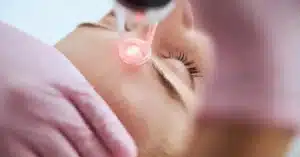Laser Safety: Understanding the Drawbacks and Precautions
Laser technology has revolutionized various industries, from healthcare to manufacturing, with its precision and versatility. However, like any technology, lasers have their drawbacks. In this article, we’ll explore some of the limitations and potential risks associated with laser applications.
- Eye Hazards: One of the most significant concerns with lasers is the potential harm they can cause to the eyes. Direct exposure to laser beams, especially high-power lasers, can lead to permanent visual impairment or even blindness. This risk is particularly high in industries where lasers are used extensively, such as medicine and construction.
- Skin Damage: Laser beams can also pose a threat to the skin. Prolonged exposure to laser radiation can result in burns, skin discoloration, and other dermatological issues. This is why operators and personnel near lasers must wear appropriate protective clothing
-
The Cost Challenge of Laser Technology
- Cost: Another drawback of laser technology is its cost. Acquiring and maintaining lasers, especially when used in cutting-edge medical procedures or industrial applications, can be prohibitively expensive. This cost can limit access to laser technology for smaller businesses or healthcare facilities.
- Limited Effects on Some Materials: While lasers are highly effective on many materials, they may not work well on all. Some materials, such as reflective surfaces or transparent materials, can be challenging to process with lasers. This limitation can restrict the range of applications where lasers can be employed.
- Safety Regulations: Due to the potential risks associated with lasers, stringent safety regulations and guidelines exist. Laser operators must receive proper training and certification and adhere to safety protocols. Failure to abide by these rules may result in fines or legal repercussions.
Frequently Asked Questions:
Q: Can laser beams cause immediate eye damage?
A: Yes, laser beams, especially high-power ones, can cause immediate eye damage, including blindness.
Q: Are lasers safe for all materials? A: No, not all materials are a good fit for lasers. Some materials, like reflective or transparent substances, can be challenging to work with using lasers.
Q: Are there safety regulations for laser use?
A: Yes, strict safety regulations and guidelines exist to ensure safe laser operation. Operators must undergo proper training and certification and follow safety protocols.
In conclusion, while lasers offer numerous benefits, it’s essential to be aware of their limitations and potential risks. Eye and skin hazards, cost considerations, limited material effects, and adherence to safety regulations all play a crucial role in the safe and responsible use of laser technology. Stay vigilant and prioritize laser safety in all applications.
Can Lasers Damage Camera Sensors?
In the age of modern technology, cameras have become an integral part of our lives. From capturing precious moments to professional photography, cameras have seen significant advancements over the years. However, with the proliferation of lasers in various fields, concerns have arisen about the potential damage to camera sensors. Let’s investigate this subject and look at the information.
What is a Camera Sensor?
An image sensor sometimes referred to as a camera sensor, is an essential part of digital cameras.. It converts light into electrical signals, which are then processed to create the final image. There are two common types of camera sensors: CCD (Charge-Coupled Device) and CMOS (Complementary Metal-Oxide-Semiconductor).
Can Lasers Damage Camera Sensors?
Yes, lasers have the capability to damage camera sensors. When a laser beam directly impacts a sensor, it can cause permanent damage or render the sensor completely inoperable. This is because the concentrated energy of laser light can overpower the sensor’s ability to convert light into electrical signals, resulting in irreversible damage.
How Does Laser Damage Occur?
Camera sensors can be damaged by lasers in two primary ways: thermal damage and blooming. Thermal damage occurs when intense laser beams melt or damage sensitive components of the sensor. Blooming happens when the intensity of the laser’s brightness exceeds the sensor’s dynamic range, causing pixel saturation.
How to Safeguard Camera Sensors from Laser Damage
In the age of advanced technology, cameras have become an indispensable part of our lives, from capturing cherished moments to professional photography. However, with the increasing prevalence of lasers in various fields, concerns have arisen about the potential damage they can inflict on camera sensors. Let’s explore how to protect camera sensors from laser damage while emphasizing the importance of laser safety.
Understanding the Vulnerability
Camera sensors, also known as image sensors, are vital components of digital cameras and play a crucial role in modern camera technology. They convert light into electrical signals, which are subsequently processed to produce images. There are primarily two types of camera sensors: CCD (Charge-Coupled Device) and CMOS (Complementary Metal-Oxide-Semiconductor).
Taking Precautions for Laser Safety
To protect camera sensors from potential laser damage, it’s crucial to take specific precautions:
1. Avoid Direct Exposure
The most fundamental step is to refrain from pointing your camera directly at laser beams or their sources. Direct exposure to laser light can cause irreparable harm to your camera’s sensor.
2. Use Lens Filters or Protective Glass
Adding an extra layer of protection can significantly reduce the intensity of laser light before it reaches the sensor. Lens filters or protective glass can act as a barrier, minimizing the risk of sensor damage.
3. Keep Firmware Updated
Manufacturers often release firmware updates that include enhancements to sensor protection. Keeping your camera’s firmware up-to-date is advisable to take advantage of these improvements.
4. Monitor Laser Sources
Stay aware of your surroundings and identify laser sources in your vicinity. Knowing where lasers are being used can help you avoid potentially harmful situations.
Conclusion
In conclusion, safeguarding camera sensors from laser damage is a critical aspect of ensuring the longevity and functionality of your camera equipment. By adhering to these precautions and emphasizing laser safety, you can protect your camera sensors from potential harm while continuing to capture memorable moments with confidence. In conclusion, failing to take proper precautions can lead to potential damage to your camera’s sensor from lasers.
Understanding the risks and adhering to safety measures can help ensure the longevity and functionality of your camera sensor. So, the next time you capture those captivating moments, remember to exercise caution and protect your camera sensor from the potentially harmful effects of lasers. This article emphasizes the importance of laser safety when using cameras to protect their sensors from potential damage.
READ MORE: Detecting Cancer with Butterfly

